Ultimate guide to sunscreen: Everything you need to know about SPF, UVA rays and shelf life
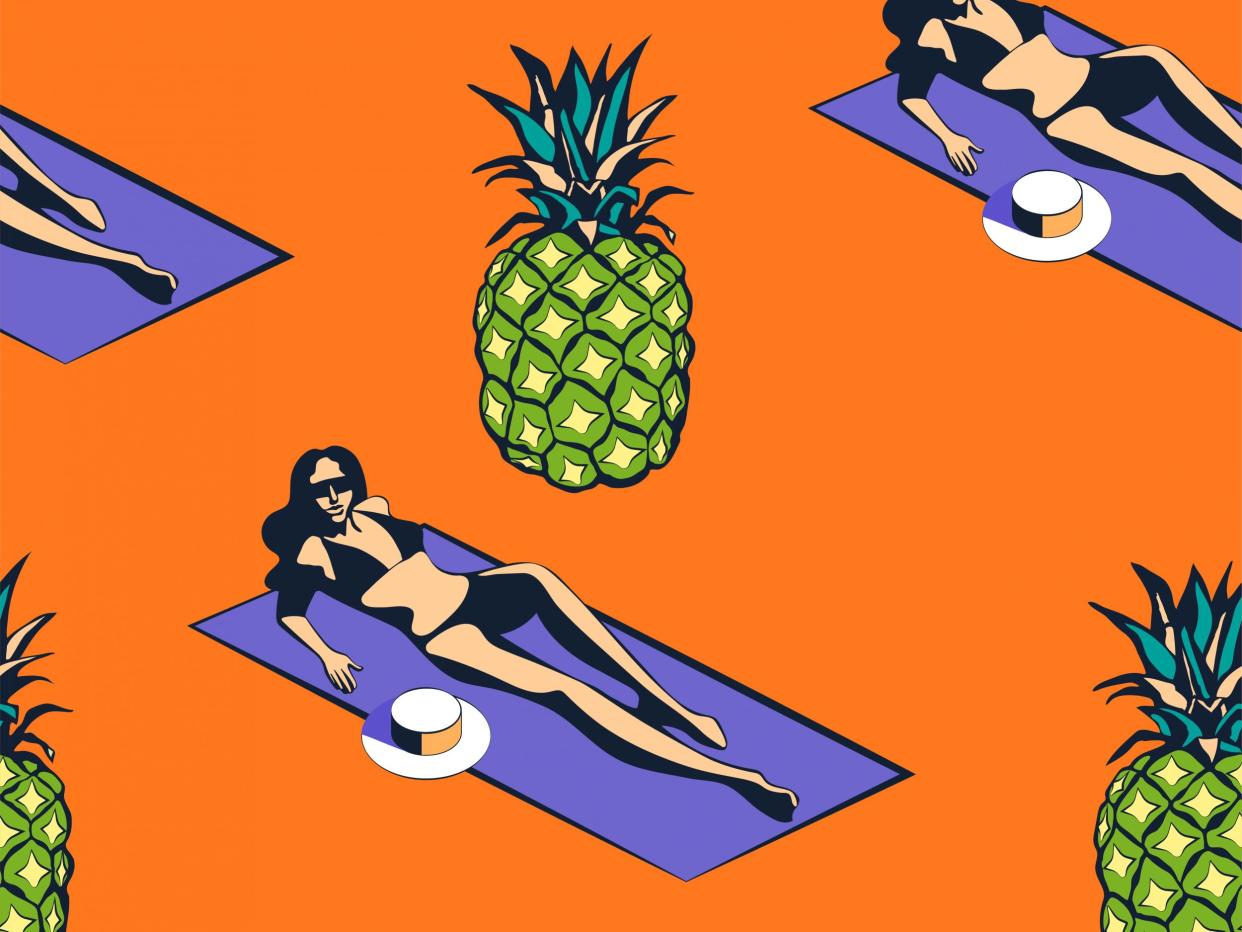
Although this year you’re more likely to be applying your sunscreen by a paddling pool in your garden than on an idyllic sandy beach, suncare is still an absolute necessity to protect your skin from harmful rays.
However, it’s a burning topic (see what we did there) that is often overwhelming and confusing.
To decipher all of the jargon surrounding suncare, we’ve asked the experts to break it down and help us navigate the mass of products in order to help you make informed choices about which protection is best.
Consider this your homeschooling guide to sensible suncare for the whole family.
What are UVA and UVB rays?
The sunlight that reaches us is made up of two types of harmful rays: long-wave ultraviolet A (UVA) and short-wave ultraviolet B (UVB).
UVA rays penetrate deep into the dermis, the skin’s thickest layer. Unprotected exposure can lead to premature skin ageing and wrinkling (photoageing), and the suppression of the immune system.
Read more:
UVB rays will usually burn the superficial layers of your skin too – the epidermis (top layer) and the dermis (the thick tough layer that lies underneath).
According to Kristine Guanzon, education marketing manager for suncare brand Coola, “UVB light plays a key role in the development of skin cancer. The intensity of UVB rays vary by season, location and time of day, with 10am to 4pm being the peak hours. Sunburnt skin doesn’t just feel awful, it can cause permanent damage over time.”
It's important to look for a sunscreen that protects against both types of rays.
What is SPF?
SPF stands for sun protection factor. Sunscreens are classified by an SPF number which refers to their ability to deflect UVB rays.
The SPF rating is calculated by comparing the amount of time needed to burn sunscreen-protected skin versus unprotected skin. It is rated on a scale from 2 to 50+. The higher the SPF number, the stronger the protection you'll have.
How do star ratings work?
Protection from UVA rays is measured by a star rating that can be found on sunscreen bottles. These ratings range from zero to five stars – the more stars, the better the protection.
According to the British Association of Dermatologists, a sunscreen with a rating of 4 or 5 stars is generally considered to provide a good standard of sun protection, as long as it is paired with time in the shade and suitable clothing.
Read more: 14 best eye creams for mature skin that hydrate dry areas and tackle wrinkles
You may also notice “UVA” written in a circle on sunscreen bottles. This is a European marking and means the UVA protection is at least one third of the SPF value, therefore indicating that it meets the EU standard.
Sunscreen that protects you against both UVA and UVB rays can sometimes be called “broad spectrum”, although there isn’t a consistent standard of UVA protection associated with this phrase (unlike with the European marking).
How much sunscreen should you apply?
The answer varies from person to person depending on your size and skin type. However, as a ballpark estimate, Dr Reto Peirano, the laboratory manager for Nivea Sun, says: “You would need 2-3 tablespoons of sunscreen to sufficiently cover your body and another two tablespoons for your face.
"Interestingly, most of us have a self-protection time of between five and 40 minutes, but you shouldn’t rely on this to avoid burning,” he adds.
Don’t forget to reapply your sunscreen every two hours to maintain protection.
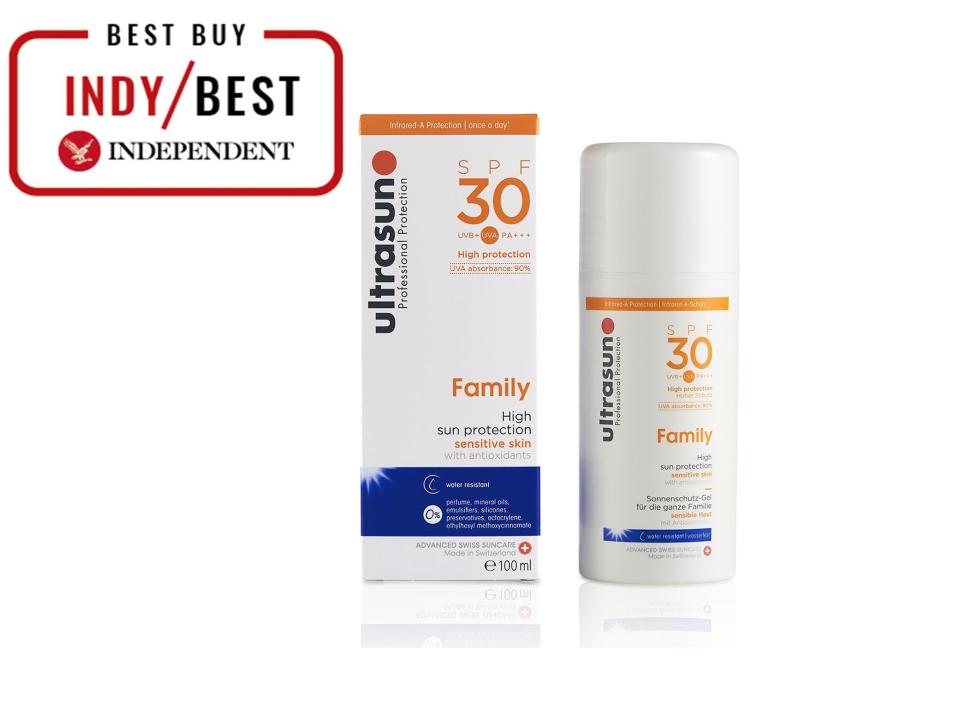
In our guide to the best suncreens for your body, we recommended Ultrasun’s family SPF30 (£20, Superdrug.com), which our tester praised for its “perfect gel texture (neither too sloppy nor too thick) and ease of application”.
Or, for those with sensitive skin, in our guide to the best sunscreens for sensitive skin we recommended La Roche-Posay’s anthelios ultra-light invisible fluid SPF50+ (£13.50, Boots.com), with our tester saying: “The thin, milky fluid is lovely for anyone who experiences prickly heat in the sun or finds that thicker creams exacerbate heat rashes.”
How do you choose between the different types of sunscreen?
Once-a-day sunscreen
You should be wary of formulas that claim to offer all-day protection with just one application. A 2016 study by Which? found that the average SPF offered by once-a-day sunscreens had decreased by 74 per cent after six to eight hours of wear.
Abi Cleeve, managing director at Ultrasun, stresses that you shouldn’t spend all day in the sun, regardless of how often you reapply your cream – although you should reapply every two hours.
She says: “Be sun savvy. Know your skin and select the right protection level for you based on your skin’s natural colour and how prone you are to burning.”
Water-resistant sunscreen
“Contrary to belief, water-resistant doesn’t mean waterproof,” says Cleeve. “No sun protection product is waterproof. Water-resistance means they are tested to ensure up to 40 minutes of resistance underwater.”
Water-resistant formulas are tailored for prolonged water immersion, such as when swimming, or when perspiring, such as while playing outdoor sports.
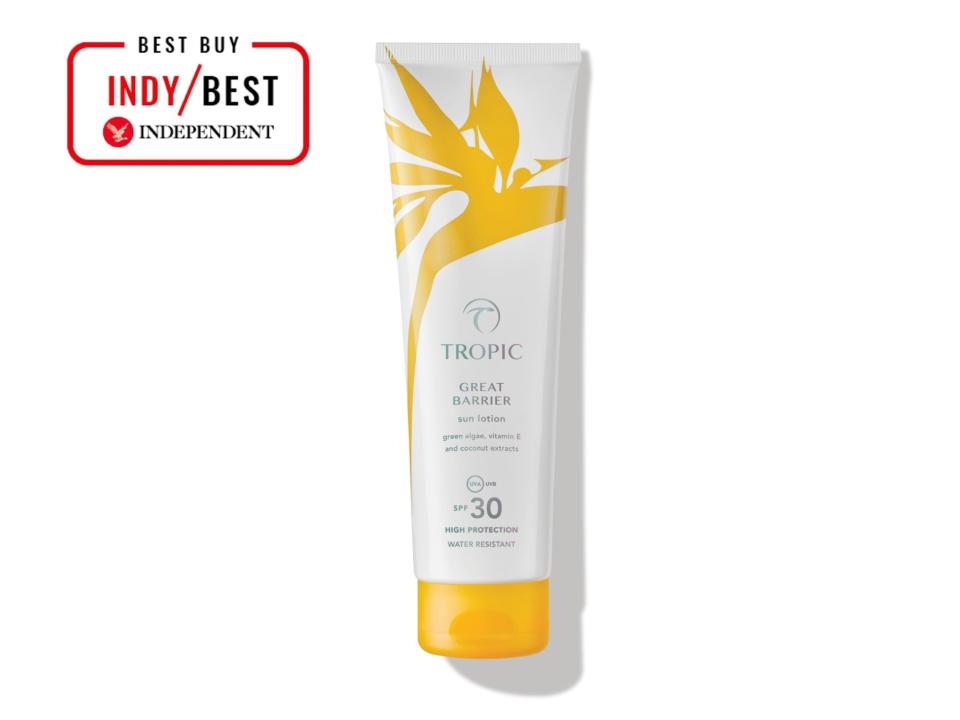
If you’re planning on taking a dip in the ocean while wearing your SPF this summer, you might want to consider a “reef-safe” option, as these formulas are less damaging to aquatic life. In our guide to the best reef-safe sunscreens, we recommended Tropic Skincare’s great barrier sun lotion (£28, Tropicskincare.com). Our tester said: “We loved how hydrating and smooth this lotion left our skin feeling, with no trace of greasiness, chalky residue or a white cast.”
Sunscreen with insect repellent
Suncream with insect repellent may sound like a handy double whammy, but NHS Fit for Travel recommends using suncream separately to insect repellent. In general, repellants should be applied after sunscreen, and you should be aware that the “SPF protection of your sunscreen may be reduced”.
Sunscreens for babies and children
Rather than just using the same bottle of suncream for the entire family, it is worth investing in suncare specifically made for children as it is formulated to protect their delicate skin and to minimise the risk of allergic reactions.
Read more: How to get your garden ready for entertaining
Raj Sandhan, expert advisor from Mustela, one of the leading skincare brands for babies and young children, explains: “Babies’ skin is significantly thinner than adults. From 0-2 years, the skin is at a critical stage of development. Babies have an immature skin barrier function and therefore it requires extra care."
Sandhan suggests looking for SPF50+ anti UVA and UVB protection, with a highly water-resistant formula to completely protect the skin. “It should be suitable for sensitive skin, including atopic prone skin, and should not contain parabens,” he adds.
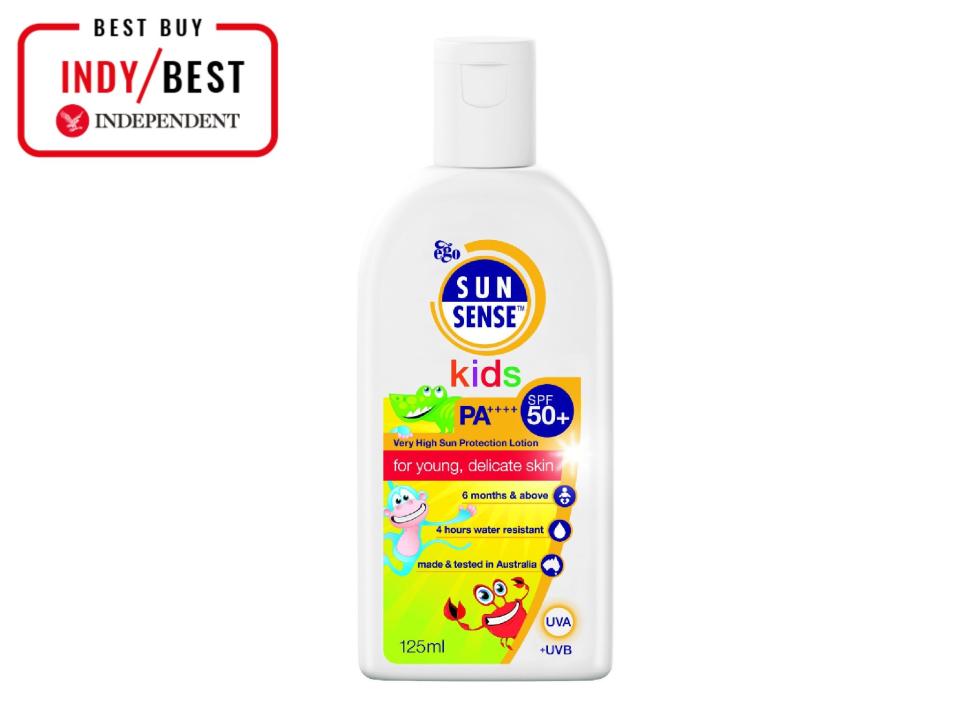
We recommended SunSense’s kids SPF50+ (£14.99, Sunsense.co.uk) in our round-up of the best sunscreen for kids, as it’s ideal for little ones’ delicate skin. Or for babies, there’s Green People’s organic children scent free sun cream SPF30 (£21, Greenpeople.co.uk): in our guide to the best baby sunscreens, our tester noted that the fragrance-free formula “absorbs in a flash with no greasy or sticky leftovers – ideal for wriggly babies”.
What is the average shelf life of sunscreen?
Most sunscreens have a shelf life of two years. But to be cautious, it’s best to chuck out unfinished sunscreen than wait for your annual holiday to come around again to finish the bottle.
If any old products look grainy, watery or discoloured, or if the odour has changed, that’s your cue to discard it. The expiration dates can usually be found on the bottom of the bottles.
What type of sunscreen is best for your face?
Facial skin is thinner and more vulnerable than skin on the body, so it’s worth investing in suncare that is specific to the face (even if your base contains an SPF, you need a separate suncare product).
Nivea’s Dr Reto Peirano suggests choosing products that are “lightweight, protect against skin ageing (via UVA/UVB protection) and offer an eye-friendly formula and is ophthalmologically tested (meaning the products have been certified safe to use around the delicate eye area), especially if you regularly wear contact lenses”.
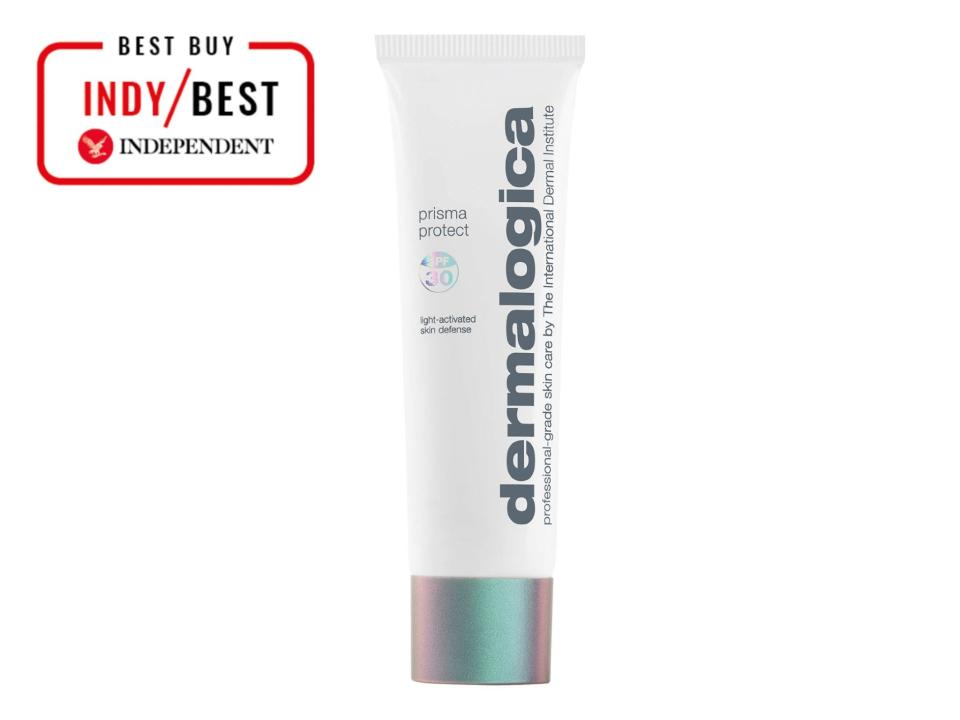
For a facial sunscreen suited to all skin types, try Dermalogica’s prisma protect SPF30 (£58, Lookfantastic.com), which we recommended in our guide to the best facial sunscreens, and, according to our tester, “looks much like your average sun cream but isn’t at all heavy or greasy”.
Can you put sunscreen on a spray tan?
Dr Peirano reminds us that “spray tans do not increase the skin’s protection against sun damage. Regardless of whether you’re wearing self-tan or not, it is always recommended to practice safe sun behaviour by seeking shade, covering up, and applying suncream (no matter what your skin tone).”
If you tend to use a self-tan before going on holiday, then consider your suncare an extra boost. Most suncare is highly moisturising, and the more hydrated your skin, the better your fake tan will look.
Voucher codes
For the latest discounts on sunscreen and other skincare offers, try the links below:
To soothe and repair sun-damaged skin, read our edit of the best aftersun lotions, creams and balms

